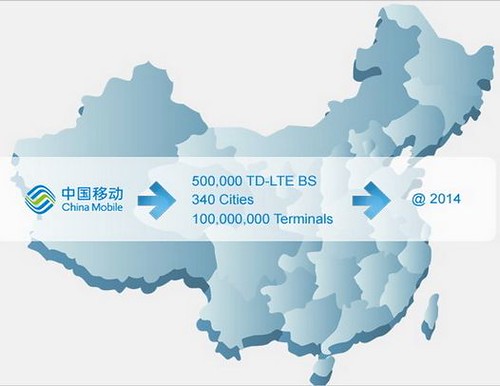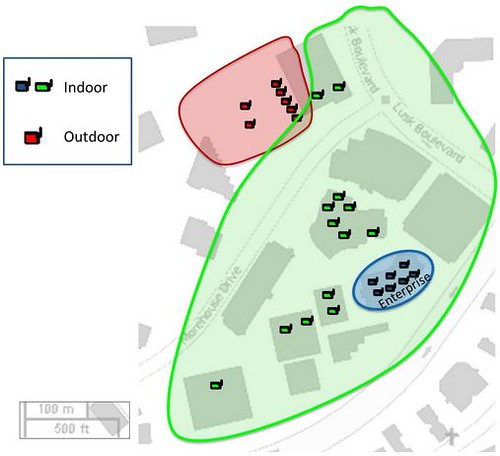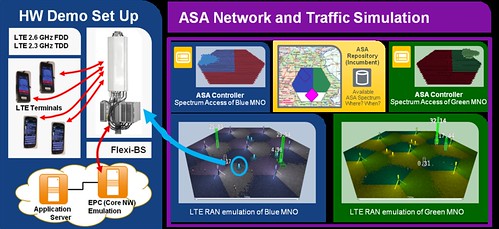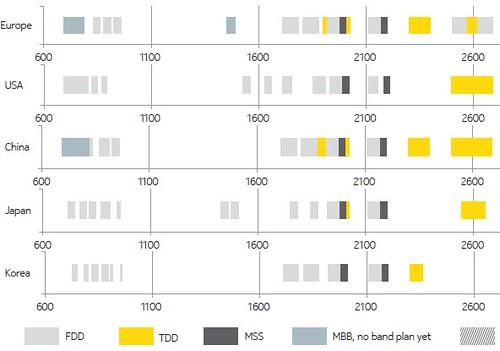China Mobile has released bidding results for second-phase TD-LTE deployment with Huawei, ZTE and Datang the top three winners, followed by Ericsson, NSN and Alcatel-Lucent.
After first-phase TD-LTE procurement in 2013, when China Mobile purchased 207,000 base stations, the second phase will deploy TD-LTE wireless equipment in 31 provinces, municipalities and autonomous regions, involving 266,000 base stations.
China Mobile, the world’s largest carrier, hopes to promote the evolution to LTE-A and increase the data rate from 100M to 200M, 400M or even 1G. The company hopes to commercialize VoLTE by the end of 2014.
Meanwhile, in November of 2013, as part of Sprint’s Phase 1 trial, Qualcomm showcased the UltraSON in hyper-dense small cell networks.
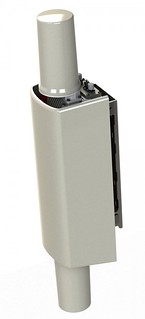 Qualcomm’s UltraSON simplifies or eliminates RF planning (thus allowing plug-and-play) with a suite of Self-Organizing Network (SON) features. They run on Qualcomm’s small cell chipsets developed by Qualcomm Atheros.
Qualcomm’s UltraSON simplifies or eliminates RF planning (thus allowing plug-and-play) with a suite of Self-Organizing Network (SON) features. They run on Qualcomm’s small cell chipsets developed by Qualcomm Atheros.
Built with Airspan’s AirSynergy 2000 LTE-Advanced Pico Base Stations (right), it uses Qualcomm small cell chipsets with UltraSON technology for an equivalent density of 1000 cells per km2, operating on Sprint’s band 41 LTE-TDD (Clearwire) spectrum.
A key feature of the AirSynergy family technology is the ability to self-configure, self-connect, self-heal and self-optimize when deployed as a network of elements.
In the phase 2 trials, the Phoenix International Raceway was chosen to test hyper-dense small cells.
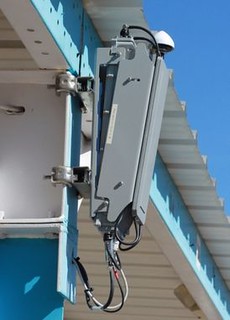 Qualcomm installed 31 small cell base stations in the garage area of the Phoenix International Raceway to test density limits, measure network performance and quantify the impact on user experiences.
Qualcomm installed 31 small cell base stations in the garage area of the Phoenix International Raceway to test density limits, measure network performance and quantify the impact on user experiences.
Self-configuring deployment is designed to install quickly with a minimum of self-interference while delivering high speed data, indoors and out.
The difference between Distributed Antenna Systems and traditional Small Cells is where the RF baseband processing is located, explains Alcatel-Lucent’s Mike Schabel.
Small Cells incorporate this onboard and so require only a relatively low speed IP/Ethernet connection. DAS systems co-locate this elsewhere, usually in the building basement, and are limited mostly by the cable capacity to each radio node.
Authorized Shared Access (ASA) allows a primary spectrum owner to share idle spectrum with other carriers.
LTE-U delivers LTE service on unlicensed bands (such as those used by Wi-Fi). Alcatel-Lucent is partnering with Qualcomm on that initiative and plans offering that in a future release, said Schabel.
Cloud RAN centralizes multiple LTE base stations in a data center. They work together to reduce interference between neighboring cells, maximize capacity and reduce the physical footprint. NSN’s Centralized RAN runs on their Flexi Multiradio 10 Base Station with a software upgrade. It works with all existing LTE devices.
The number of TD-LTE base stations around the world will hit 800,000 in 2014, covering 3 billion people, and 150 million, according to the Global TD-LTE Initiative (GTI).
Posted on Fri, 14 Mar 2014 07:08:02 +0000 at http://www.dailywireless.org/2014/03/13/...e-phase-2/
Comments: http://www.dailywireless.org/2014/03/13/.../#comments
